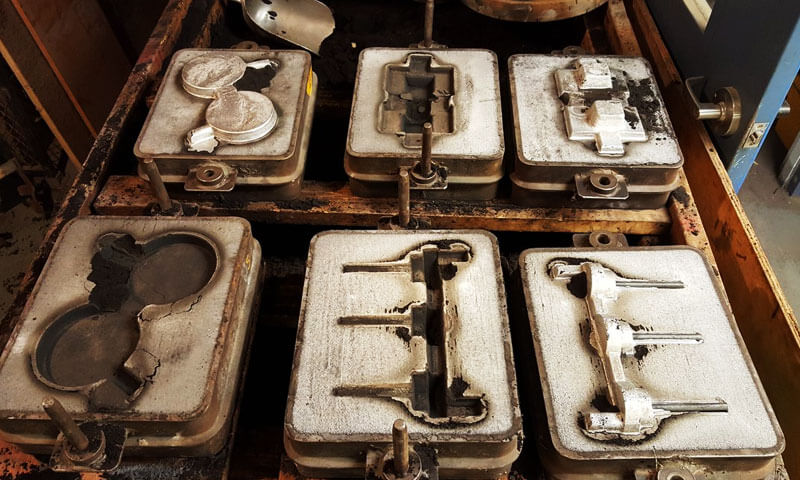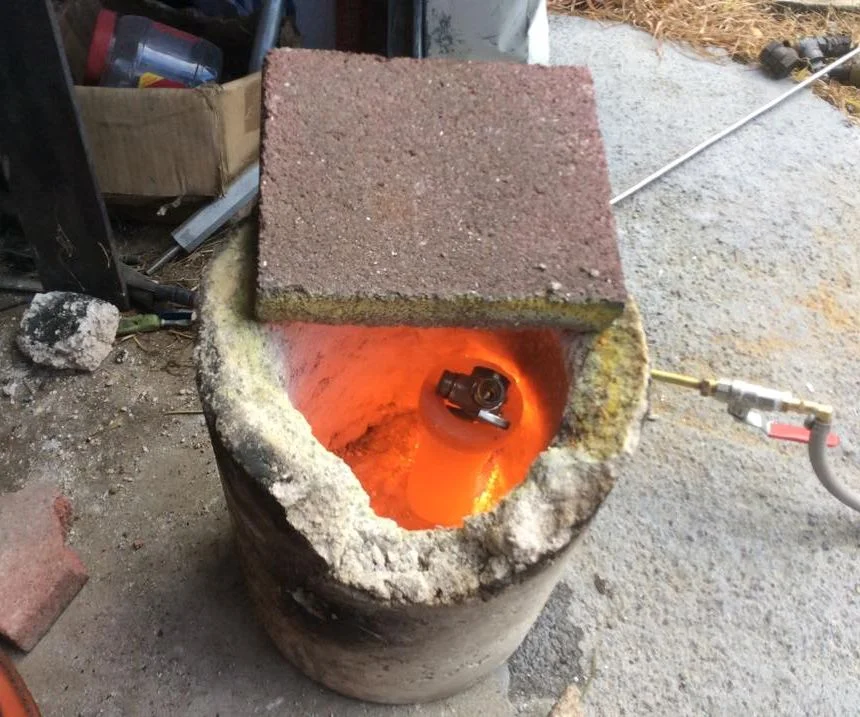Explore the benefits of Aluminum Metal Casting in aerospace sectors
Wiki Article
Understanding the Manufacturing Process and Upkeep Practices for Aluminum Shop Products
The production procedure for aluminum factory products is intricate and calls for a comprehensive understanding of multiple stages. From the melting of light weight aluminum at high temperature levels to different casting methods, each action plays an essential duty. Additionally, maintenance methods assure tools remains reliable and products are free from defects. However, the complexities of these procedures and their influence on product quality raising crucial concerns regarding finest methods and innovative methods in the market.Introduction of Aluminum Shop Products
Aluminum shop items are critical components in different markets, offering a blend of light-weight toughness and rust resistance. These products are generally utilized in markets such as automotive, aerospace, and building, where longevity and performance are critical. Light weight aluminum's low thickness makes it an ideal product for applications calling for minimized weight without compromising architectural stability. The flexibility of aluminum permits for the production of intricate geometries, dealing with varied layout demands.In addition, aluminum foundry items can be customized with numerous alloys to boost particular residential or commercial properties, such as boosted thermal conductivity or enhanced firmness. Their resistance to oxidation and rust warranties durability, making them suitable for both indoor and outside applications. The mix of these attributes adds to the growing preference for aluminum in contemporary manufacturing. As industries look for to enhance performance and sustainability, light weight aluminum foundry products continue to play an important duty in meeting these demands.
Thawing Process: Changing Light Weight Aluminum
The melting procedure is a basic action in the production of aluminum foundry items, as it transforms strong light weight aluminum into a molten state ideal for spreading. This process typically takes place in a furnace, where scrap aluminum or ingots are warmed to temperatures around 660 degrees Celsius. The option of furnace-- be it electric, gas, or induction-- influences the effectiveness and expense of melting.Throughout melting, careful consideration is provided to the elimination of pollutants, such as oxides and other pollutants, which can detrimentally affect the high quality of the last item. Changes may be included to assist in this purification process, enhancing the fluidity of the liquified steel.
In enhancement, temperature level control is important to assure uniformity and avoid overheating, which can lead to oxidation. The melting procedure not only prepares aluminum for spreading however likewise plays a significant duty in determining the integrity and residential or commercial properties of the last factory items.
Casting Techniques in Aluminum Factory
Various casting methods are utilized in aluminum foundries to develop top notch parts, each matched to various applications and specs. Among the most frequently utilized techniques are sand spreading, pass away casting, and investment casting. Sand casting makes use of a combination of sand and binder to develop mold and mildews, permitting large parts and intricate shapes (aluminum metal casting). Pass away spreading, characterized by the high-pressure injection of liquified aluminum into steel molds, creates accurate and repeatable parts, perfect for mass production. Investment spreading, or lost-wax spreading, includes producing a wax design that is coated in a ceramic covering, enabling great information and elaborate designs. Each technique has its benefits; sand spreading is affordable for low-volume manufacturing, while die casting offers performance for high-volume runs. Financial investment spreading is preferred for elements requiring extraordinary accuracy and surface coating. Picking the suitable strategy depends upon aspects such as production quantity, component complexity, and product homes
Finishing Processes for Aluminum Components
After casting strategies have formed the light weight aluminum elements, completing procedures play a significant role in improving their capability and visual appeal. These processes commonly consist of machining, surface therapy, and finishing applications. Machining involves precise elimination of product to accomplish preferred measurements and surface area high quality. This is essential for guaranteeing that components fit seamlessly right into their designated applications.Surface therapies, such as anodizing and polishing, are utilized to boost rust resistance and boost visual qualities. Aluminum Casting. Anodizing, specifically, supplies a protective oxide layer, making the aluminum a lot more visually attractive and sturdy

Maintenance Practices for Durability
Applying regular maintenance methods is necessary for guaranteeing the long life of aluminum shop items. Routine inspections need to be conducted to identify deterioration, as very early detection can prevent costly repair services and prolong the life expectancy of parts. Cleaning up equipment and equipment on a that site regular basis minimizes the risk of contamination, which can adversely influence item top quality. Lubrication of moving components is additionally crucial, as it minimizes rubbing and wear, enhancing functional performance.In addition, the execution of a preventative upkeep routine aids in methodically addressing prospective problems prior to they rise (Casting Foundry). This consists of monitoring for leakages, guaranteeing proper alignment, and adjusting machinery. Staff training on proper handling and upkeep techniques fosters a culture of treatment, which is crucial for sustaining item integrity. Finally, documenting maintenance tasks offers valuable understandings right into efficiency patterns, permitting educated decision-making concerning future maintenance methods
Top Quality Control and Screening in Aluminum Foundry Manufacturing
Quality assurance and testing are critical in aluminum factory production, as they ensure that end products fulfill specified requirements and consumer expectations. This procedure starts with raw material examination, guaranteeing that aluminum alloys adhere to called for structures. Throughout the production cycle, in-process evaluations are carried out to keep track of criteria like pressure, product, and temperature flow.
Different tests-- such as dimensional checks, aesthetic assessments, and non-destructive testing-- are done to determine any kind of defects as soon as spreading is full. Mechanical residential or commercial properties, including tensile toughness and firmness, are reviewed through standardized screening methods.
Adherence to market criteria, such as ISO and ASTM, is critical for ensuring product high quality. Analytical procedure control methods are typically employed to assess production data and help with continual improvement. By executing extensive quality control measures, light weight aluminum factories can improve product reliability and reduce waste, ultimately bring about greater consumer fulfillment and functional efficiency.
Regularly Asked Concerns
What Are the Ecological Effects of Light Weight Aluminum Foundry Procedures?
Light weight aluminum foundry procedures can cause considerable environmental effects, including air pollution from exhausts, water contamination from waste discharge, and power usage contributing to greenhouse gas exhausts, eventually affecting neighborhood ecosystems and area wellness.Exactly How Do Aluminum Prices Affect Shop Production Choices?
Aluminum rates substantially influence shop manufacturing choices; greater costs might lead to lower outcome or increased effectiveness steps, while lower costs can encourage expanded production and investment in brand-new technologies to boost competitiveness and productivity.visit their website
What Precaution Are Essential in Aluminum Foundries?
Crucial precaution in aluminum factories include protective equipment, correct ventilation to decrease breathing of fumes, routine tools maintenance, training on emergency treatments, and adherence to safety and security procedures to stop accidents and injuries amongst employees.Can Light Weight Aluminum Be Recycled, and How Is It Processed?
Light weight aluminum can without a doubt be recycled. The procedure involves collection, melting, and reforming the product right into new items, considerably minimizing energy consumption and ecological impact contrasted to key light weight aluminum manufacturing while protecting worldly quality.What Prevail Problems in Aluminum Casting and Their Reasons?

The manufacturing procedure for aluminum foundry items is detailed and calls for an extensive understanding of several stages. Light weight aluminum shop items are essential elements in numerous sectors, using a mix of lightweight strength and corrosion resistance. The melting procedure is a basic action in the manufacturing of aluminum factory items, as it transforms strong light weight aluminum into a molten state ideal for spreading. Implementing routine upkeep methods is important for making sure the durability of light weight aluminum shop items. Quality control and testing are extremely important in light weight aluminum foundry production, as they guarantee that final products satisfy specified requirements and client assumptions.
Report this wiki page